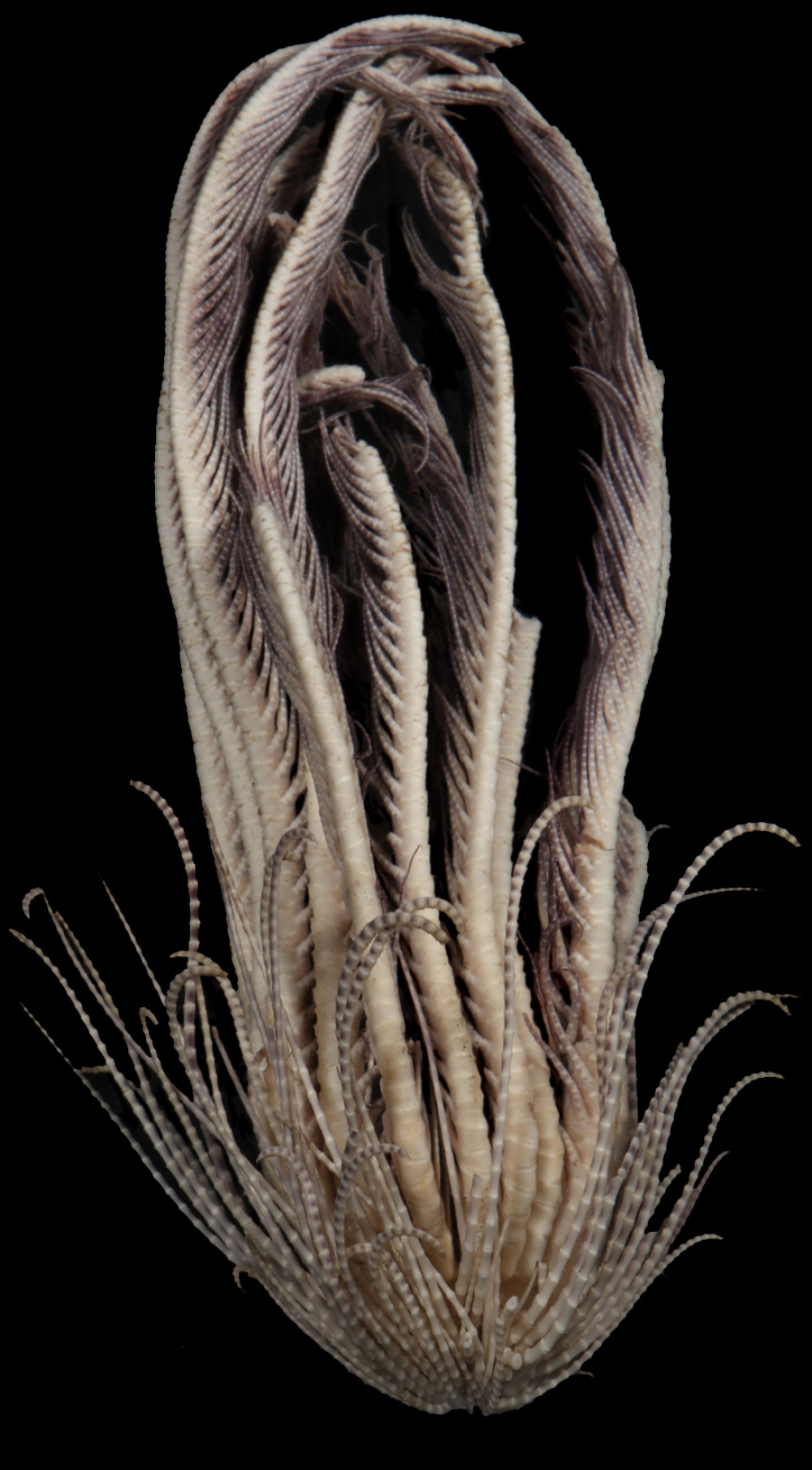The 20-legged Antarctic strawberry feather star, Promachocrinus fragarius, is one of four new-to-science species described in a paper that explores the cryptic diversity of a genus of free-swimming stemless crinoids. Looking a little like a face hugger that got a leggy upgrade, these alien-like organisms are related to starfish, sea cucumbers, and other echinoderms.
Antarctic feather stars fall under the genus Promachocrinus and were once considered to represent a single, circum-Antarctic species Promachocrinus kerguelensis. However, new research has revealed there are, in fact, several species of these freaky little feather stars flailing their way through some of the ocean’s chilliest marine environments. Now, using DNA analyses and taking a closer look at the complex morphology of specimens collected between 2008 and 2017, researchers have discovered a surprising degree of diversity.
There were additional seven species identified among the feather stars studied, bringing the total number for the genus from one up to eight, and four of these had never been identified before. Of the new-to-science species, a particularly fruity example of the peculiar crinoids is the Antarctic strawberry feather star, Promachocrinus fragarius.

The Antarctic strawberry sea star is *the star* in this story of cryptic diversity.
Image courtesy of Gregory Rouse
Fragaria is a small genus of flowering plants in the rose family, Rosaceae, that will be more familiar to you as strawberry plants for their juicy fruits. The strawberry feather star might not share their carmine-red coloration, but the researchers found its body to be strawberry-like enough in shape to inspire its species name.
All species sequenced – bar one, P. wattsorum – demonstrated a wide range when it came to depth, sitting between 100 to 1,000 meters (328 to 3,280 feet) below the surface. While free-swimming crinoids are largely considered to be sedentary, seldom-moving animals, they can take to the water in search of food.
A swimming crinoid is truly a sight to behold. They move through the water by flailing their many arms in a rhythmic and mesmerizing way. An interesting discovery here is that this new study identifying the morphological differences in crinoid samples revealed that a long-held assumption they all had 20 arms is wrong, as there were in fact some feather stars with only 10 arms.
In these cases, differences between species were fairly easy to spot working from morphology alone, but other species were truly cryptic, requiring molecular analyses to achieve their scooby-doo reveal.
“Monitoring biodiversity requires robust identification of taxa and this can be very complicated when taxa are truly cryptic,” explained the authors. “This study suggests that some species in Promachocrinus can be determined on the basis of morphology, however the ambiguity among some species suggests that sequencing (minimally COI) should remain the primary tool, if species-level resolution is required.”
The study is published in Invertebrate Systematics.
Source Link: Alien-Like Antarctic Feather Star With 20 Legs Joins Four New-To-Science Species